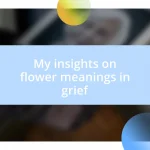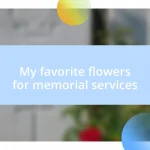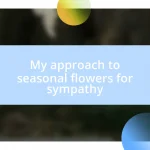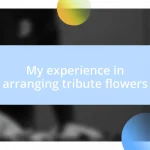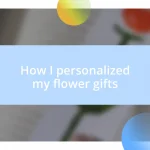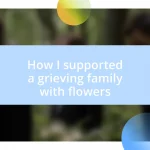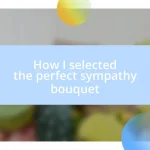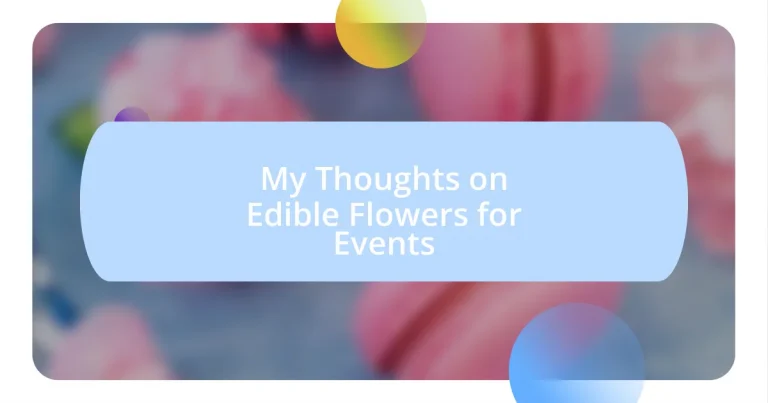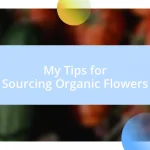Key takeaways:
- Edible flowers enhance culinary experiences by adding unique flavors, vibrant colors, and cultural connections to dishes.
- Key benefits of using edible flowers include improved visual appeal, nutritional boosts, and the opportunity for creative culinary experimentation.
- Safety is crucial; always verify the edibility, avoid pesticides, and check for allergies when using edible flowers in cooking.
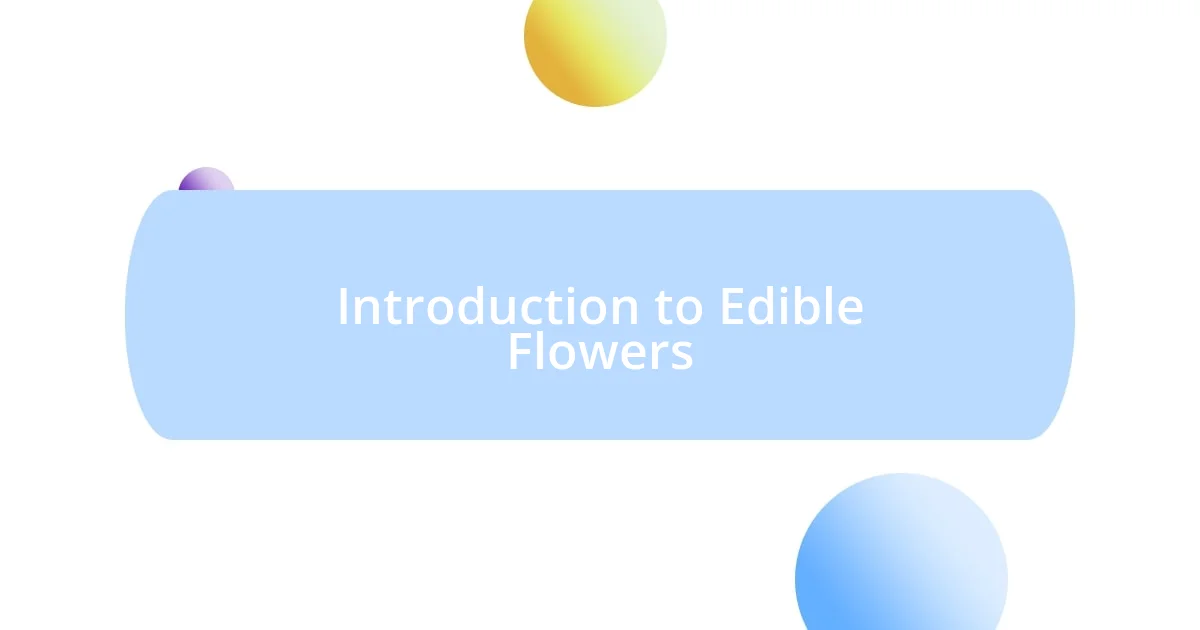
Introduction to Edible Flowers
Edible flowers are more than just a beautiful garnish; they can transform an ordinary dish into a stunning masterpiece. I remember the first time I tasted a vibrant nasturtium; its peppery flavor surprised me and added a delightful twist to my salad. Have you ever considered how the visual appeal of edible flowers not only enhances our meals but also heightens our overall dining experience?
Exploring the world of edible flowers can be as delightful as gardening itself. Each bloom carries its own unique flavor profile and aroma, inviting chefs and home cooks alike to experiment in the kitchen. I often find myself wondering, which flower would add a touch of elegance to my next gathering? It’s in these small, creative decisions that I see the joy flourish, much like the blossoms on a warm spring day.
From lavender’s soothing fragrance to the subtle sweetness of violets, these petals have a history intertwined with culinary traditions. My curiosity led me to try cooking with hibiscus, and I was enchanted by its tartness in sauces. Isn’t it fascinating how these natural ingredients can connect us to cultural cuisines and elevate our meals?
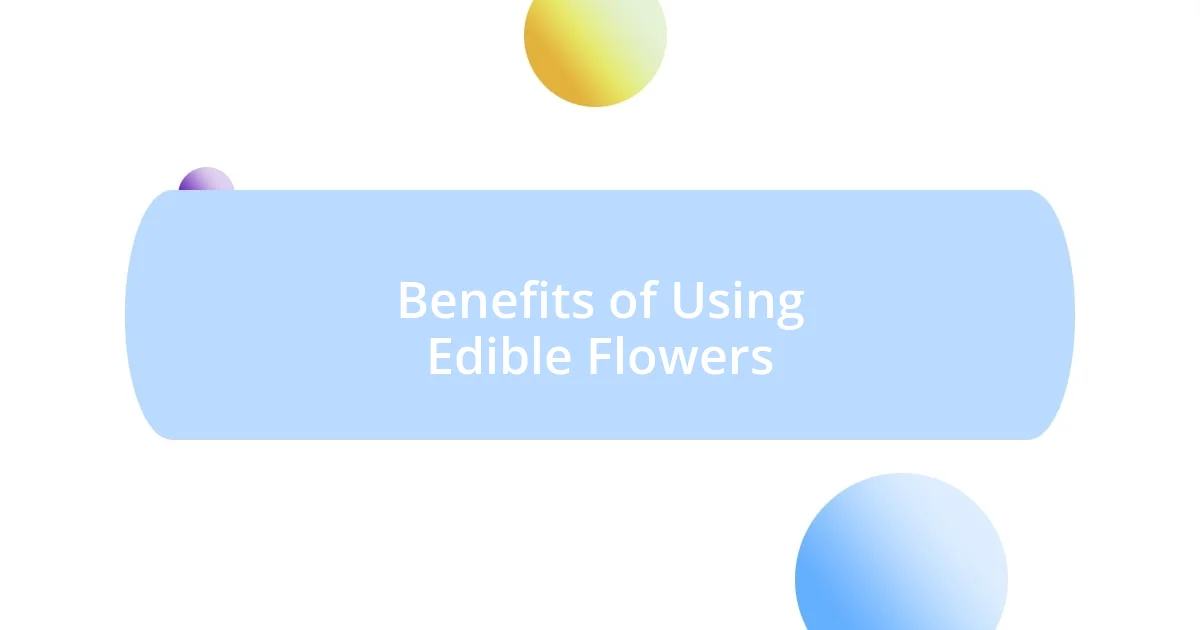
Benefits of Using Edible Flowers
Using edible flowers in food and beverages offers a plethora of benefits that go beyond aesthetic appeal. They introduce unique flavors and textures, making even simple dishes stand out. I once hosted a brunch where I used brightly colored pansies in a fruit salad. The flowers added a little burst of sweetness and a pop of color that sparked delightful conversations among my guests.
Here are some benefits of incorporating edible flowers:
- Enhanced Visual Appeal: Flowers add a vivid splash of color and elegance to any dish or drink.
- Unique Flavors: Each flower brings its own taste, from sweet to savory, allowing for creative culinary experiments.
- Cultural Connection: Many edible flowers have historical ties to specific cuisines, enriching the dining experience.
- Nutrition Boost: Certain flowers, like nasturtiums, are not only edible but packed with vitamins and antioxidants.
- Seasonal Variety: Edible flowers allow you to celebrate the seasons, incorporating blooms that are fresh and local.
Every time I experiment with these blossoms, I find myself rediscovering my love for cooking, as they remind me of the beauty and creativity in nature. The joy of plating a flower-garnished dish is always a highlight, igniting a sense of pride that I wish to share with everyone at my table.
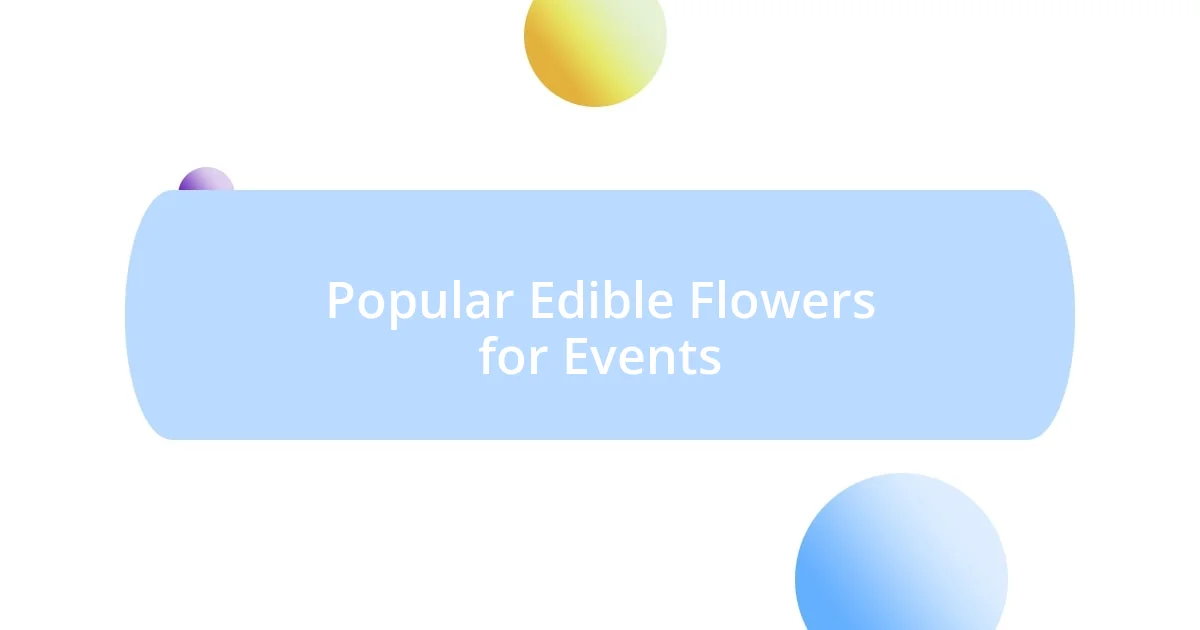
Popular Edible Flowers for Events
When it comes to popular edible flowers, a few lovely options really stand out for events. I particularly love using pansies due to their vibrant colors and mild flavor. The first time I decorated a cake with them for my sister’s birthday, everyone was amazed. It beautifully combined taste and aesthetics, enhancing not just the look of the dessert but also its charm.
Another flower that catches my attention is lavender. It’s not just for its alluring aroma; lavender can create a whimsical atmosphere. I remember incorporating it into lemonade for a summer gathering, and guests were enchanted. The subtle floral notes turned an ordinary drink into something refreshing and special. Have you ever tried wildflowers? They’re another stunning choice with a diverse range of flavors and colors that can make your event feel like a garden party any time of year!
Lastly, I’ve found that edible roses are often underestimated. They’re delightful not only in salads but also as a beautiful garnish on plates. I once used rose petals as a striking bed for grilled chicken during a family dinner, and it evoked so many memories of my grandmother’s garden. The beauty of each petal can connect us to those cherished moments.
| Flower | Flavor Profile |
|---|---|
| Pansies | Mild, sweet |
| Lavender | Floral, slightly sweet |
| Wildflowers | Diverse, unique |
| Roses | Sweet, fragrant |
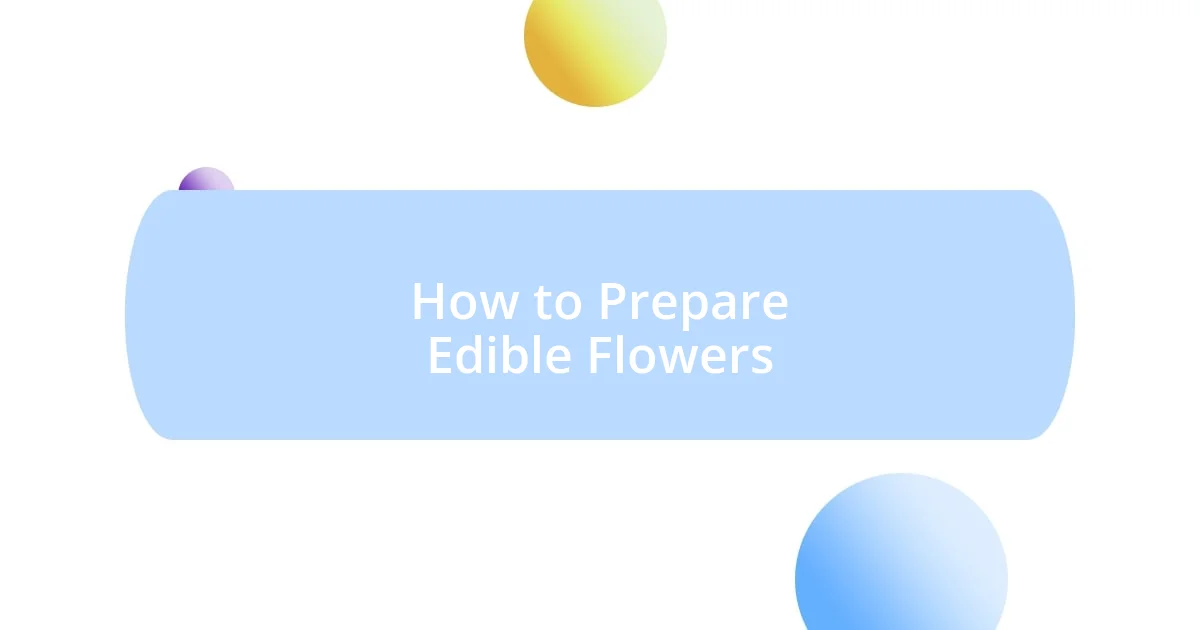
How to Prepare Edible Flowers
Preparing edible flowers is quite an enjoyable process, and it can enhance the overall experience of presenting them at any event. First, I always begin by gently rinsing the flowers under cool water to remove any dirt or insects. This part always reminds me of the careful handling they require; it feels almost like treating them with the same delicacy we would reserve for a cherished heirloom. Once rinsed, I pat them dry with a paper towel, ensuring they’re not overly wet, as excess moisture can sometimes diminish their vibrant colors.
It’s essential to carefully remove any non-edible parts, like the stems and leaves. I can’t help but think back to the first time I mistakenly left some green bits on a dish. The flowers were lovely, but the bitterness of the leaves distracted from the overall flavor. With experience, I’ve learned that focusing on just the petals allows their unique tastes to shine, giving the dish a refined quality.
Lastly, consider the best way to incorporate these blooms into your dish. I’ve found that using them as garnishes elevates the presentation, acting as little artistic flourishes that draw the eye. Have you ever noticed how a simple cocktail laced with a couple of edible flowers instantly transforms into a work of art? I recall one gathering where I added vibrant nasturtiums to a summer salad; the guests were not only impressed but genuinely excited to taste something so beautiful. With just a bit of preparation, I believe edible flowers can completely revolutionize your culinary approach.
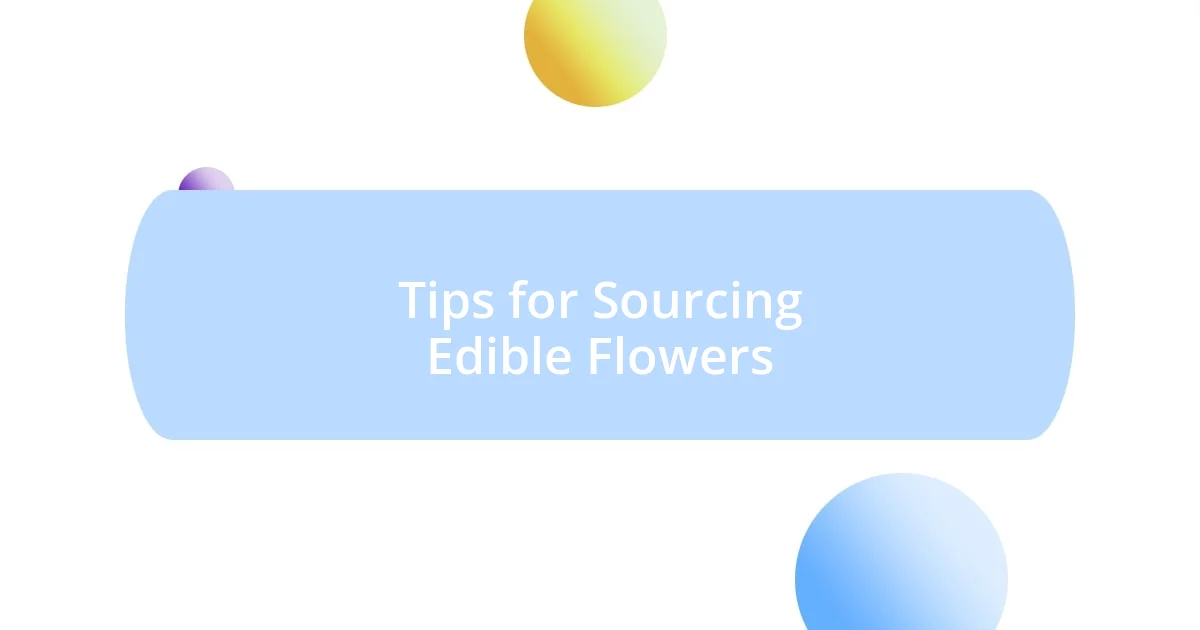
Tips for Sourcing Edible Flowers
Sourcing edible flowers can be a delightful adventure, but choosing the right supplier is key. I often turn to local farmers’ markets because not only do they offer fresh options, but you can also chat with the growers about their practices. It gives a personal touch and a sense of trust, knowing exactly how the flowers were cultivated. Have you ever discovered a hidden gem at a market? Those moments can lead to sourcing unique blooms that elevate your event.
If you’re considering online options, make sure to select reliable vendors specializing in edible flowers. I once ordered lavender from an online shop that promised quality but sent wilting blooms. What a letdown! A little research goes a long way—read reviews or, if possible, request samples before committing to a larger order. Finding the right source can truly make or break your floral presentation.
Lastly, don’t shy away from foraging, if you have the knowledge or guidance to do so safely. I remember a lovely spring afternoon spent in a nearby park, gathering wild violets for a tea party. The thrill of picking these blooms and knowing they were fresh and free made the gathering feel even more special. Just remember to be mindful of the environmental impact and safety—only forage from clean areas away from pollutants. It’s such a joyous way to connect with nature while enhancing your culinary creations!
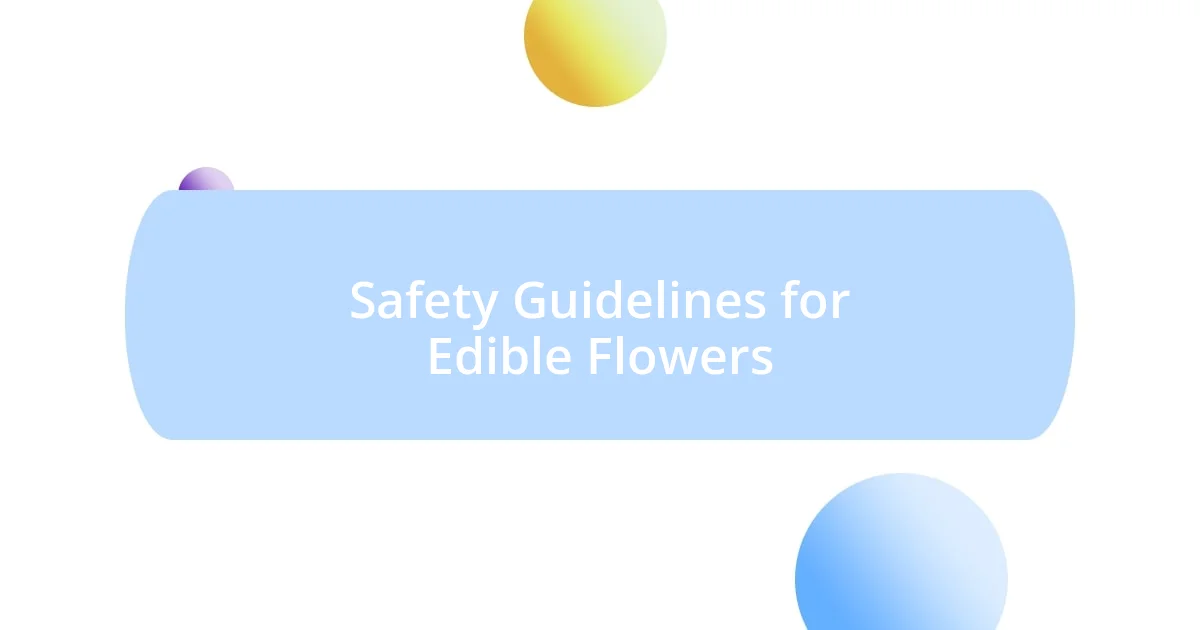
Safety Guidelines for Edible Flowers
Ensuring the safety of edible flowers is paramount. I remember my first experience using flowers in a dish; I was so excited that I didn’t double-check which ones were safe. Since then, I’ve learned to verify that any edible flowers I use are specifically labeled for culinary use and not treated with harmful pesticides. It’s a simple step that could save you from unnecessary trouble.
Be mindful also of possible allergies. I’ve encountered guests who had unexpected reactions to certain flowers, like chamomile. It’s vital to ask about allergies before serving, much like checking for dietary restrictions. Wouldn’t you want your culinary experience to be delightful rather than alarming?
When growing or foraging flowers, stick to areas known to be free of chemicals and pollutants. The memory of foraging edible flowers along a riverside was magical, but it always reminds me—what’s the point of a beautiful dish if it’s not safe to eat? The joy of using fresh, home-harvested blooms is unbeatable, but safety must come first, ensuring that every petal adds both flavor and peace of mind to the table.



